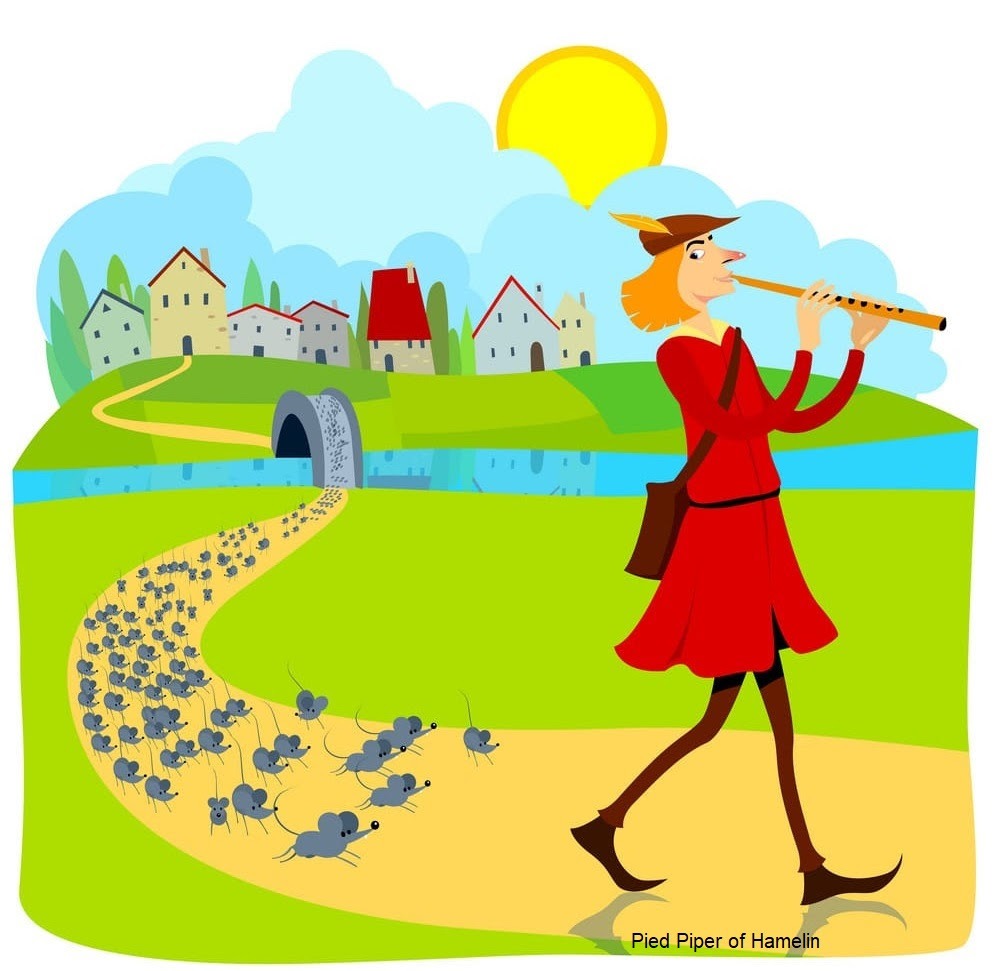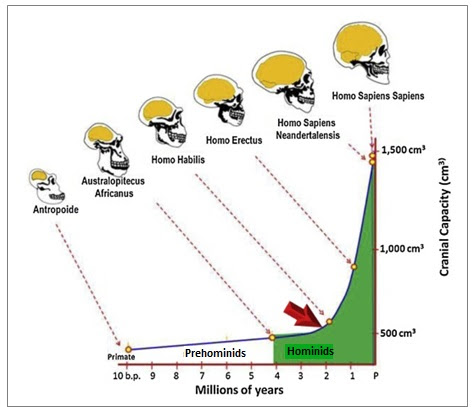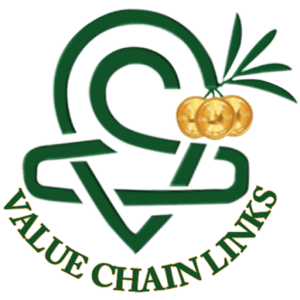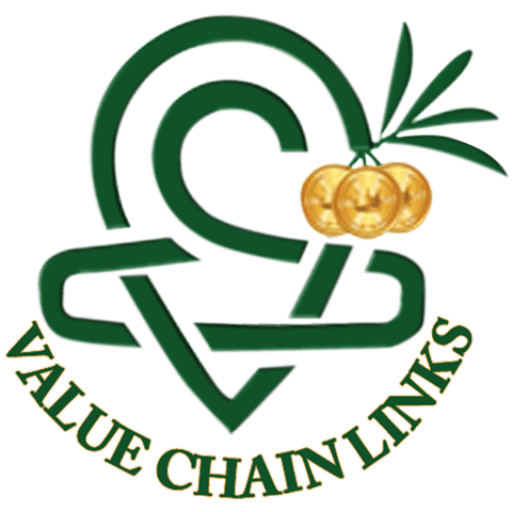WHY YOU SHOULDN’T DO WHAT EVERYBODY ELSE DOES?

BY Dr. Nimrod
This column is dedicated to those who see “change” as a constant state, those who believe that change is possible with self-commitment. Above all, I dedicate this column to those who wish to improve the future of their loved ones.
INTERTWINED GLOBAL AND PERSONAL CHANGES
My grandfather was a wealthy farmer in Barkasovo, a village in Hungary, now part of Ukraine. In 1944 the Nazis killed him and most of his family.
Some years ago, and after long persuasion, I convinced my mother to visit her birth village for the first time in 75 years. When we arrived at the village, my mother noticed it didn’t change much, but now it was much poorer.
This was in great contrast to the rapid changes and development the agro-industry in my Kibbutz and in Israel were and are going through and the good socioeconomic status of Israel’s farmers.
ONCE, ALBERT EINSTEIN gave his students a final exam. His assistant noticed the “error” and timidly made the famous physicist aware of his mistake. Einstein looked at his assistant and said: “You’re right, these are the same questions as last year, but the answers have changed.”
Nowadays, like thousands of years ago, farmers are required to provide for their families with the necessities of living with dignity. Nothing has changed, aside from the ways (the answers) to achieve that task has changed.
Since the world’s creation and the beginning of “time,” everything is constantly changing, and change takes time.
If so, what is unique about the “changes” we experience today, especially in the agro-industry, and why not changing is against our self-interest?
To answer this, let’s view the corresponding link between “change” and “time,” which has evolved, changed, and impacts the agricultural sector.
AGRICULTURE
Agriculture combines the necessary ingredients, water, minerals, and light, to produce food by growing plants, animals, and other living organisms. Each of the “ingredients” has its own pace of changing, i.e., geological for inorganic matters and biological for the organic matter (living creatures).
Thirteen thousand years ago, humankind began to harness “technology” to manage its food production – we call it Agriculture, which today has changed into Agro-industry.
“Agriculture” and “Agro-industry” each have their internal pace, which is not the same.
I constantly meet farmers, many farmers, and I listen to them. I found out that the ones from emerging economies, the poorer, have a misconception of “time” and “change.” Hence, they act in a way that is not aligned with the required pace, resulting in persistent poverty.
To this end, it is critical to understand the different Clocks (“change” and “time”) that define and rule our lives and the meaning of each for our current and future success.
EVOLUTIONARY CLOCKS: A BRIEF HISTORY
For 4.55 billion years, Earth is changing at a geological pace, which is counted in billions of years.
Since the beginning of life, 4.25 billion years ago, life is changing at a biological pace, counted in millions of years.
What has changed?
A little bit over 4 million years ago, Hominids, the great apes, appeared. This group includes the Homo sapiens, which is – us.

Hominids introduced a new kind of change, “Technology,” acting based on new roles and new pace.
The agriculture revolution, which began only 13 thousand years ago, was the first and the most important in the history of humankind, as it launched the first “industry” and gave birth to the “technological age” of food production for human consumption.
The agriculture revolution later gave birth to other revolutions, including the industrial revolution, the information revolution, etc.
Thanks to “technology,” a new rate of change came to the world, based purely on technological developments.
Thirteen thousand years passed from the start of the Agricultural revolution to the Industrial revolution.
Thanks to the Industrial revolution, technology accelerated and reduced the time between “changes” to as little as a few years!
Most farmers in emerging economies still act according to the pace of the three “old” clocks, while today’s economy is based on the pace of the fourth clock;
(1) Geological clock – change at a pace of billions of years.
(2) Biological clock – change at a pace of millions of years.
(3) Agriculture clock – changes at a pace of thousands of years.
(4) Technology/Agro-industry clock – change at a pace of years.
Why is this important to our current economic challenges, and in particular to challenges faced by the agro-industry in emerging economies?
How is this related to “change” and doing what most people view as “impossible”?
THE CONCEPT OF CHANGE
For ages, people thought that running is the fastest way of getting from point A to point B (for most walking animals, this is still the case).
Then came the horses, camels, ostrich, etc., and people were sure that those are the fastest means of transportation. People were saying, “Nothing can be faster than a horse!”
Then came the engine and the train, and people were saying, “Nothing can be faster than a train!”
Then came… Henry Ford, which brought the assembly line revolution to the car industry, and people were saying, “Nothing can be faster than a car!”
Following his success, Ford said, “If I had asked people what they wanted, they would have said faster horses.”
Then came the airplane (the Wright Brothers), and people were saying, “Nothing can be faster than an airplane!”
Then came the rockets (and reaching the moon), and people were saying, “Nothing can be faster than a rocket!”
Then came … (fill up what is next that is “impossible”)
The above is a description of a series of historical technological-related changes brought to us thanks to few brilliant human innovators.
What is in common for those innovators?
99% of the people said to them, “It is impossible.” However, once the innovation and the “change” effectively appeared and people could see it with their own eyes, the very same people said, “How come nobody thought of it before?”.
Innovators introduce us with innovation that enables changes, and changes open opportunities for progress, bringing economic prosperity.
On his/her way to success, the innovators had to face endless “it is impossible,” “you are crazy,” “it can’t work,” “it will never work,” “you are delusion,” etc.
The innovator heard the above but kept on doing what he/she believe is the right thing to do. Why? Because innovators “can see” things differently than others, and hence, that others can’t.
The lesson learned?
99% of the people are wrong in “predicting the future” and the limits of “possible.”
If you believe in something, DO IT, don’t expect or wait for approval by others! The “approval” will arrive after the change is done, never before.
The law of change is quite simple; if you say it is “impossible,” it is probably already done somewhere else in the world or will be done sometime in the future.
If you are over the age of 40, would you believe that a letter you write will reach its recipient within one second? Still, you are now reading this letter that came to you within a second of sending it.
While writing these words, most farmers and experts still believe that it is impossible to effectively control fruit flies without spraying. Yet, the Fruit Fly Certified Trade Zone (FFCTZ) protocol is using zero sprays and is far more effective than spraying.
CAN WE AFFECT THE PACE AND THE RATE OF CHANGE?
Above, we have seen several types of changes, each with its internal rate. Let’s ask ourselves –
* Can we affect the rate of geological changes? No.
* Can we affect the rate of natural biological/genetic changes? No.
* Can we affect the rate of traditional agricultural changes? Yes (thousands of years).
* Can we affect the rate of change through technology and innovation? Yes (years).
Although slow, we can affect the rate of “traditional agriculture” and that of “technology and innovation,” which is 1000s time faster track to change and to economic success and improvement. The geological and biological changes are too slow to be considered.
THE PACE OF INNOVATION AND ECONOMIC SUCCESS
Israel’s economy is strong and successful thanks to a large, thriving, and vibrant community of entrepreneurs. But this was not always the case.
In the 1950s and 1960s, Israel was still a country in which the agricultural sector was central to its economy.
In these years, while Israel was poor and at its infancy, the “agricultural miracle” took place, and Israeli’s agriculture experiences some of its peak development and innovative changing moments. Thanks to what happened in those years, Israel’s innovative agro-industry thrives to this day.
Question: What enabled Israeli agriculture to leapfrog in the 1950s and 1960s and achieve better results than most farmers, in the emerging economies, in 2021?
Let’ us break this question into several more specific ones:
* Is it due to advanced technology? No.
Today, all farmers have access to far more advanced technologies.
* Is it because of the cost of technology? No.
The 1960s technologies are much cheaper and more available today.
* Is it because people are more/less intelligent in one place over the other? No.
Until today I didn’t notice differences in the rate of “intelligent” people between countries.
* Is it due to differences in natural resources relevant to agriculture; water, soil, etc.? No.
Israel is mostly desert and hot, with a mountainous central part, which is difficult to cultivate (where I grew up). In many emerging economies, the environmental conditions are superior.
* Is it due to economic ability? No.
In the 1950s, Israel and Israelis were so poor that food was ration. There is no country today (maybe aside from N. Korea) where food is ration.
If everything is NO, then what is the YES reason? What difference allowed Israeli agriculture to bloom and become a leader in that field within a single generation?
CHANGE SUPPORTING CONDITIONS
As usual, there is no single magic ingredient, but several components contributed to that success.
However, I wish to focus on one element: the ATTITUDE TO CHANGE and its related components. Here is a partial list of what I include under that category and the actual way reality acted:
* Courage, fearlessness, and dare to try.
* The “I can do it” attitude.
* Readiness to fail.
* A “feeling of urgency”; change must come now.
* Strong self-responsibility for bringing the change and its consequences.
* The strong belief that “anything is possible.”
* Support of other people and the surrounding environment.
Note that the above “human-based ingredients” cannot be imported or exported from one country to another.
The “good people” to make a change are always the local ones. For that reason, the Green Valley model is designed to create an economic change based on the local “good people” by providing them the required tools; an advanced business model, availability, and access to know-how, technologies, protocols, etc.
Green Valley team is aware that a change will occur when we work with the “right people” armed with the “right attitude.”
Because we don’t want to “import the right people,” we believe there are plenty of local “right people,” and it is our task to find them.
Hence, when we consider which country to work in, we start by studying the attitude and readiness for change of the local authorities, potential partners, farmers, etc.
ATTITUDE IN EMERGING ECONOMIES
Often, when I meet professionals, businesspersons, experts, and farmers in emerging economies, I encounter a tremendous apprehension to do things differently. There is a fear of changing or taking a risk, any risk. I fully understand that fear from failure and change and sympathize with it.
When you meet that attitude, you may mistakenly think that maybe the present is satisfactory or even perfect, and there is no need to change and step forward by improvement.
At the same time, and from the same people, I get a strong demand and desire for a more advanced agro-industry and a more robust economy.
Is it realistic or possible to resist changes and hope for a better economy and improved livelihood?
But change cannot occur without a genuine personal internal desire for change and a readiness to carry its burden.
Given that we cannot influence and change the geology nor our natural biology, we are left with two ways to change for a better future; “traditional agriculture” or “technology and innovation” (i.e., agro-industry).
Reluctance and unwillingness to do the necessary to carry out technological changes, including taking some level of risk, is dooming millions of farmers in the emerging economies for a future of poverty.
HOW TO CHANGE?
The future of emerging economies lies on the shoulders of the “young generation.”
The young generation sees what is happening globally and understands how far their village, town, and country are lagging behind.
The young generation knows that today, companies with a few dozen people can pour more money into the state’s treasury than the entire nation’s population.
For example, since the beginning of 2021, a handful of Israeli companies have made exits and IPO of over $40 Billion up to this moment! This is more than the GDP of some emerging economies. Those companies are worth billions because they offer POSITIVE and effective CHANGE faster and better than others.
Ask yourself, what change is my company/organization has to offer to increase prosperity?
“Change” is not an empty concept, “change” and its outcomes (results, effectiveness, etc.) can be measured in hard currency. We can then translate money into improved food, housing, infrastructure, education, healthcare, self-estimation, etc.
Last week I met with farmers who told me that their income per hectare 20 years ago was € 2,000, while today it is ONLY € 1,000.
| After twenty years of hard work and investments, their value is cut by half, and in practice, by 90%, while you expect to increase your value and not demolish it.I am filled with sorrow at the very thought of how those farmers must be feeling, their despair, and the difficulty that accompanies such poor business results.It is okay to think about the prosperity of your business, but if you work with farmers, please also consider the “positive” change you can make by helping to increase their income. What if you didn’t increase their revenue? You didn’t create a “positive” change!If you bring a “positive” change, will it be in the range of +1% per year, or maybe +10%, or +20%, or +40%, or even more per year? HOW WILL WE BRING THE CHANGE?What will bring such “change” to increase farmers’ income and put more money in their pockets?More Politics or more Technology and Professionalism, which of the two do you think can better increase innovation, accelerate changes and improve farmers’ income?While you think about it, keep in mind that every day passing without changing is a day that you, your farmers, and your country are losing and adding unnecessary suffering to the great misery and poverty that already exists.Remember, if you wake up in the morning to do the same as you did the day before, then something is wrong. Keep in mind, to change fast; you need to do what 99% of the people don’t do.Say to yourself, “I do not like the way things are today. I don’t like how we keep failing by repeatedly doing the same things that didn’t work before. I have to change and become the 1% that will bring a “positive change” by doing things differently than the other 99%.“Innovation leading to change means “to do things differently.”Hence, change through innovation is what the agro-industry in the emerging economies needs more than anything else. Be it money, methods, technologies, etc., “more of the same” is the last thing that will help the agro-industry in the emerging economies.Instead, a set of tailor-made, specially designed, field-tested, and proven solutions for a particular problem in a specific emerging economy country, is far more relevant for bringing a change versus a solution that is made for the West and then modified or downgraded for an African/Asian country.The rate of change can be faster than we think because there is no need to wait for geological, biological, or traditional agricultural changes.The future is purely in OUR hands, and that includes YOUR hands.We can enhance change by encouraging innovation. At the same time, we can slow down changes by conveying social messages that innovation and changes are impossible and undesirable. PRACTICE 24/7 “CHANGE”Green Valley brings the results and the frog leap that farmers and value chain partners in emerging economies have been waiting for, for a long time.However, no matter how significant the innovation and the change that Green Valley brings, it must be complementary with daily personal practice (habit/routine) of “change.”Innovation can and should come from all involved and supporting parties of the value chain. A day without “changing” something, big or small, is a lost and wasted day.Take, for example, the Israeli agro-industry, which I know in person very well. Thanks to innovation created by all stakeholders (farmers, packing houses, regional and national organizations, marketers, exporters, technology and service providers, and sure, also by scientists in research institutes), it has developed very fast and successful and still does.When every part of the value chain wakes up in the morning saying, “I must change so I will conclude this year better than the year before,” then there is a good chance that the entire industry will remain in motion and continuously improve. “Now, here, you see, it takes all the running you can do, to keep in the same place. If you want to get somewhere else, you must run at least twice as fast as that!” (Through the Looking Glass, by Lewis Carroll) Now, you may ask, “Do you have a recipe for innovation and change, which I can effectively apply from this moment and on?” YES, I HAVE!Take nothing for granted, and assume that there is nothing you can’t change.Print it and put it where you will see it every day. Once you understand and internalize that, you can solve any problem, look for an issue you relate to, and commit to solving it. By the way, the size of the problem is unimportant. Once you solved one problem, move to the next, and so on.That is the prescription. Start today, and you have a whole lifetime to implement it!Most people face small challenges. I wish you to confront and challenge the most significant challenges for your community. |
TAKEAWAYS
» CHANGE is inevitable.
» IF you can imagine the desired change, you can probably bring it.
» YOU can choose to lead a change and enjoy the advantage of primacy or be led into it and suffer the curse of the late-comers.
» WHEN you change, you often fail and then succeed. When you don’t change, it is the same, but in reverse order.
» THE greater the change is,the more resistance you will encounter.
» CHANGE requires courage; not to change is irresponsible.
» LISTEN and trust yourself, your abilities, and the future you envision.
» DON’T worry if you don’t have the details of the “change”; it will revile itself on time.
Please, if you found value in this article, it would mean a lot to me if you send me a comment and share it with your friends.
Subscribe here for access to exclusive content – SUBSCRIBE.

